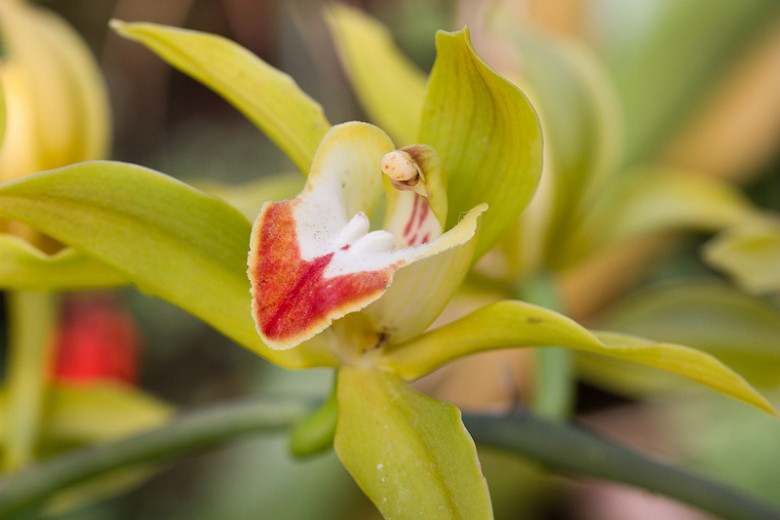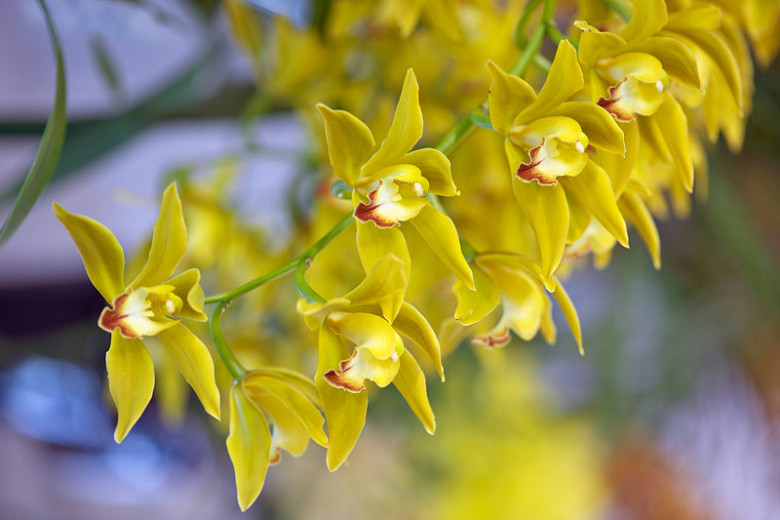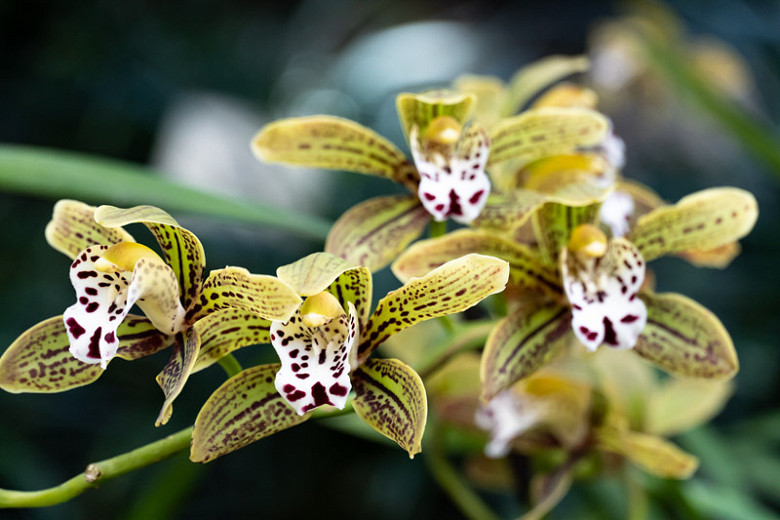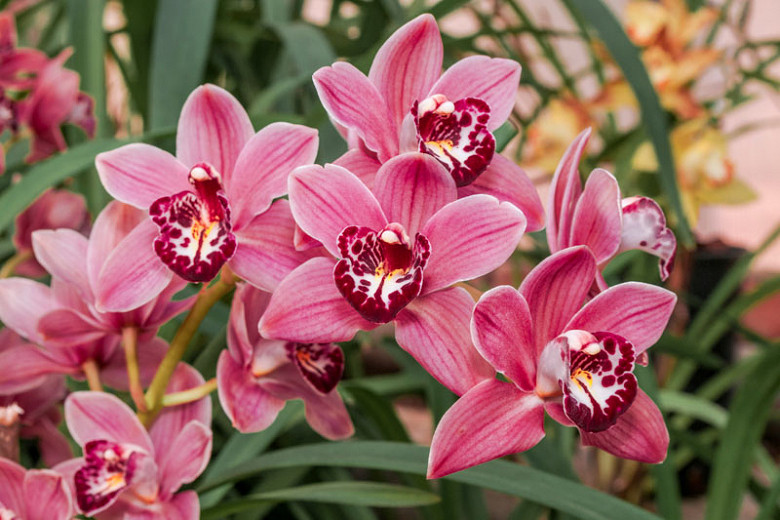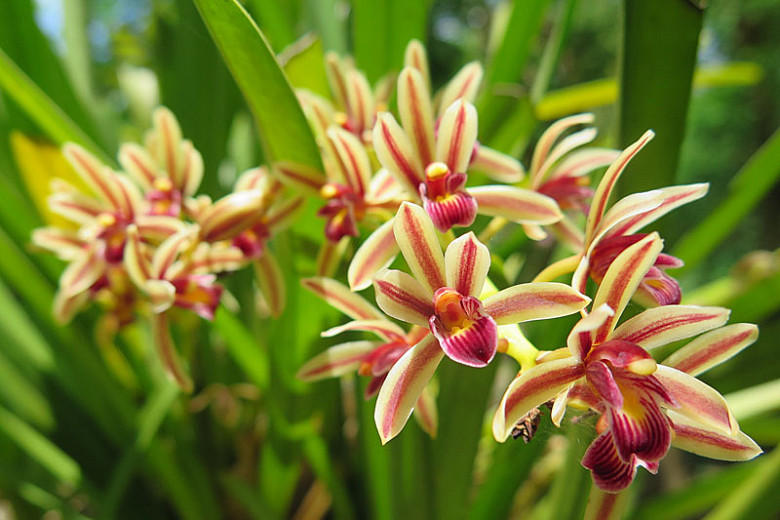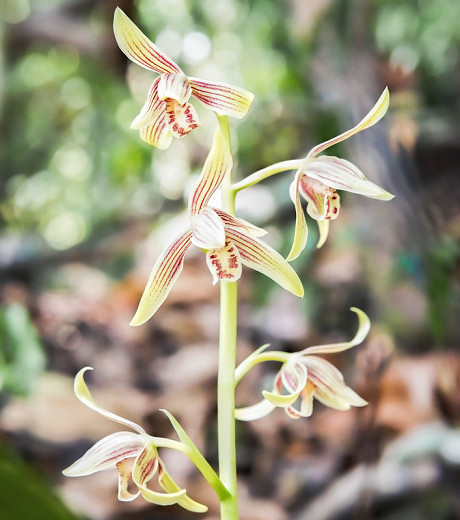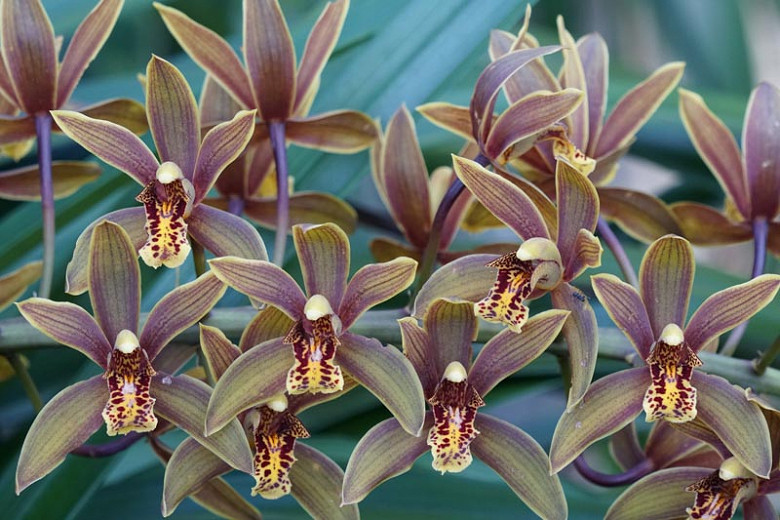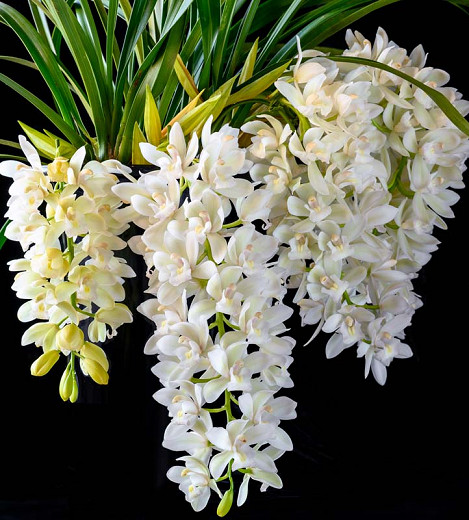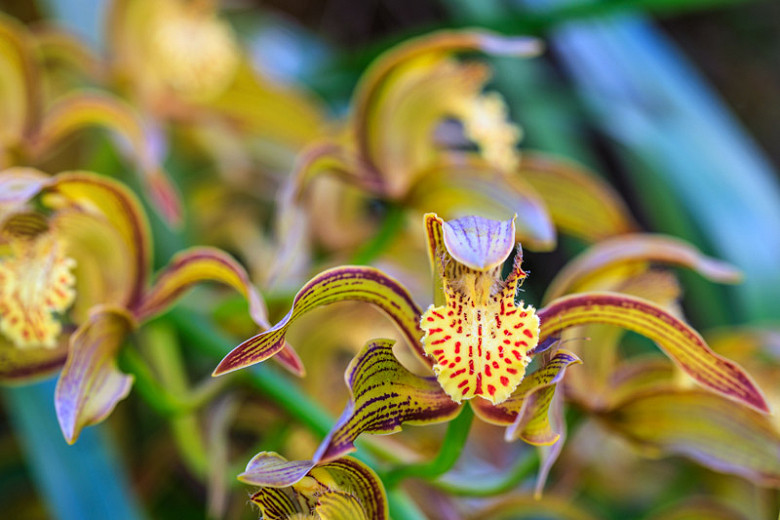Cymbidium lowianum (Lows Boat Orchid)
Cymbidium lowianum (Low’s Boat Orchid) is a large lithophytic or epiphytic orchid species boasting long, arching stems with 12 to 40 flowered inflorescences enveloped by sheaths and triangular floral bracts with long-lasting flowers.
Cymbidium lowianum (Low's Boat Orchid) is a large lithophytic or epiphytic orchid species boasting long, arching stems with 12 to 40 flowered inflorescences enveloped by sheaths and triangular floral bracts with long-lasting flowers. Blooming from autumn through to late winter or spring, the blossoms, 3-4 in. across (7-10 cm), feature apple-green sepals and petals veined with bronze and a white to yellow lip adorned with a large V-shaped dark-red mark. The ovoid pseudobulbs carry linear leaves, about 30 in. long (75 cm). Native to Myanmar, China, and Thailand, Cymbidium lowianum prefers cooler conditions for optimum growth. It is found in shaded, highland montane cloud forests at elevations of 4000-7800 ft. (1200-2400 m).
- Recipient of the prestigious Award of Garden Merit of the Royal Horticultural Society.
- Grows up to 36-60 in. tall (90-150 cm).
- Grows in epiphytic or terrestrial orchid compost in bright light with light shade during the middle of the day. In cool areas, full sun is tolerated.
- Needs a minimum night temperature of 50-60°F (10-15°C) and a daytime temperature of 75-85°F (24-29°C) in summer. Optimum temperatures in winter are 45-55°F (7-13°C) at night and 65-75°F (18-24°C) during the day.
- Maintain adequate humidity (40-60%), especially during the winter if the plant is in buds. In the home, placing the plant in a tray of damp pebbles is ideal.
- Water heavily during the growth season, keeping the potting material evenly moist. Reduce water when the pseudobulbs complete growing in late summer. Keep barely moist during the winter.
- During the growing season, feed with a high-nitrogen orchid fertilizer every week to two weeks. In late summer, use a high-phosphorus, blossom-booster fertilizer to help form bloom spikes. When not in active growth, feed once a month.
- Propagate by division of pseudobulbs when pot-bound.
- Once the flowers have faded, remove the spent flower spikes.
- Repotting is usually done in the spring after flowering, every two years, or when the potting medium decomposes. Choose a water-retentive potting mix. Medium-grade fir bark with peat moss and perlite is a common mix. Select a pot that will allow for at least 2-3 years of pseudobulb growth before crowding the pot. Keep shaded and warm until new growth sprouts.
- Generally disease free. Keep an eye out for aphids, glasshouse red spider mites, and mealybugs.
- Native to Myanmar, China, and Thailand.
Tips for reblooming
- Make sure that your Cymbidium is receiving at least 12 hours of filtered sunlight or UV rays daily, especially during spring, summer, and fall months. If the leaves are bright green or too dark, your plant is not getting enough light for blooming. Leaves should be medium to golden green in color, not dark green.
- Moderate and regular watering and adequate fertilization are important in triggering your cymbidium orchids to bloom.
- Cymbidiums need a day-night temperature difference of at least 25°F (15°C) to bloom well. If you are growing your cymbidium outside, make sure you regularly remove all fallen leaves and debris that accumulate on the orchid and in the pot. This will avoid them to decompose and cover your emerging flower spikes and rot them out.
Requirements
| Hardiness | 10 – 12 |
|---|---|
| Plant Type | Orchids |
| Plant Family | Cymbidium – Boat Orchids |
| Exposure | Partial Sun |
| Season of Interest | Spring (Early)FallWinter |
| Height | 3' – 5' (90cm – 150cm) |
| Water Needs | Average |
| Maintenance | Average |
| Soil Type | Loam, Sand |
| Soil pH | Acid, Neutral |
| Soil Drainage | Well-Drained |
| Characteristics | Cut Flowers, Plant of Merit, Showy, Evergreen |
| Garden Uses | Beds and Borders, Patio and Containers |
